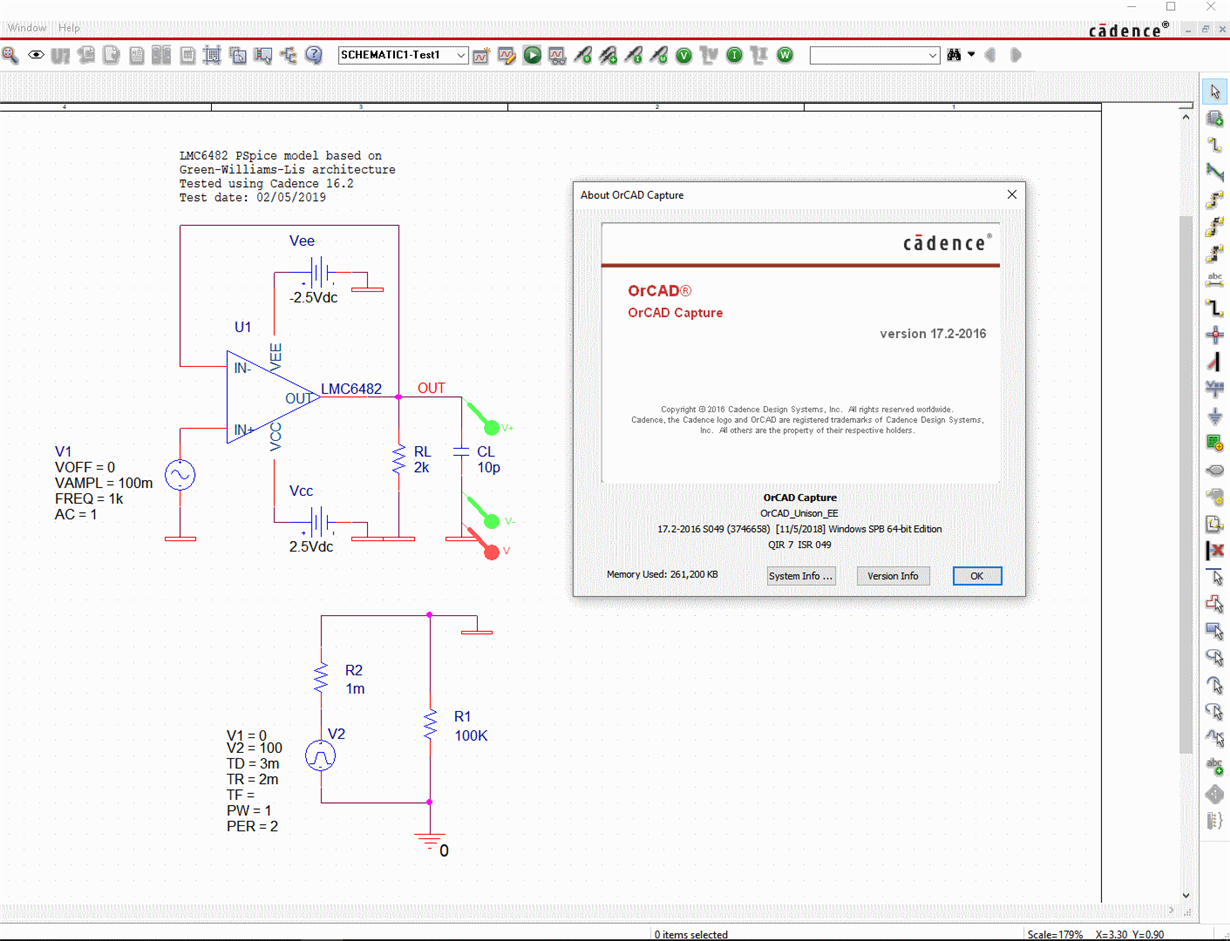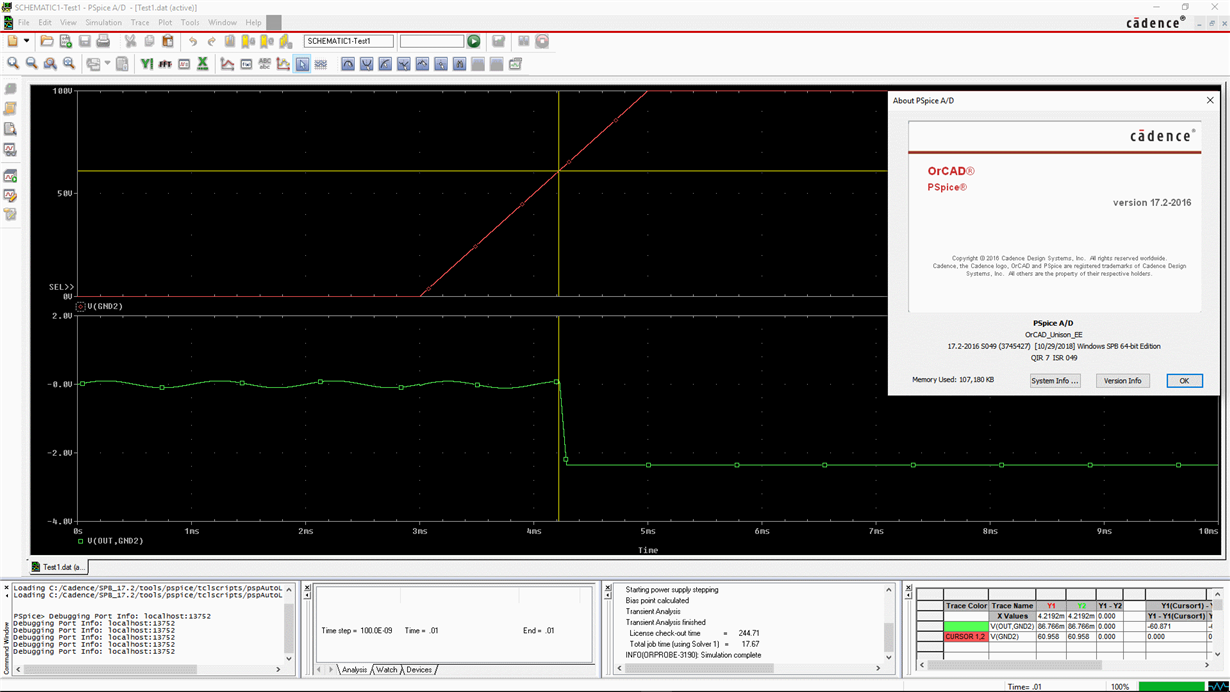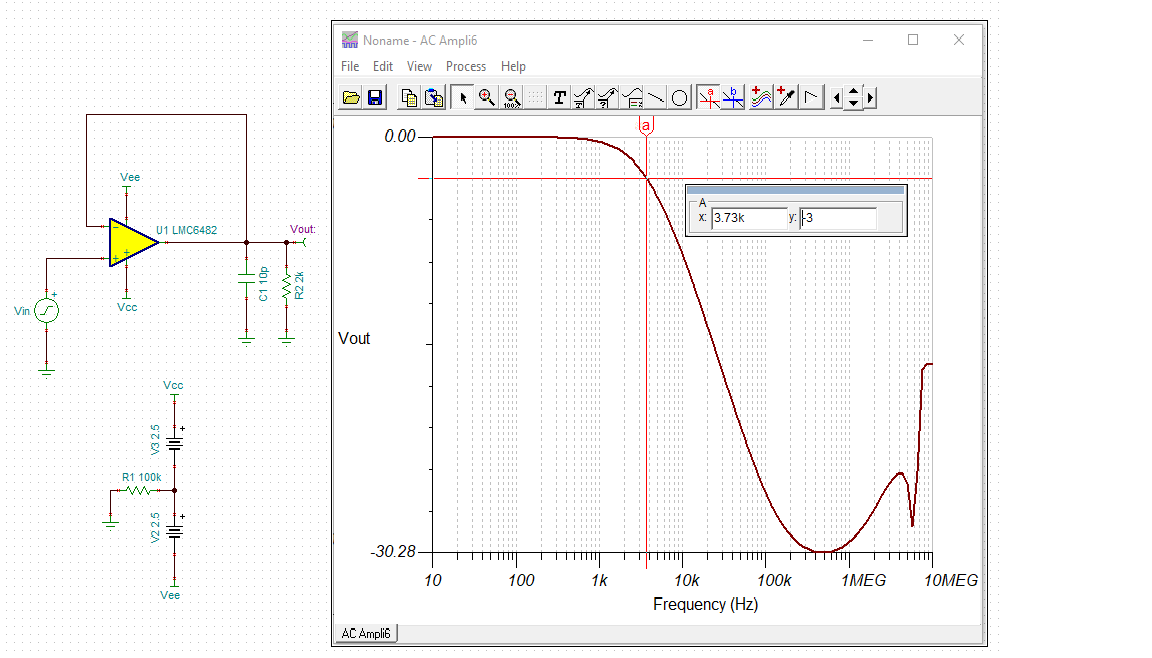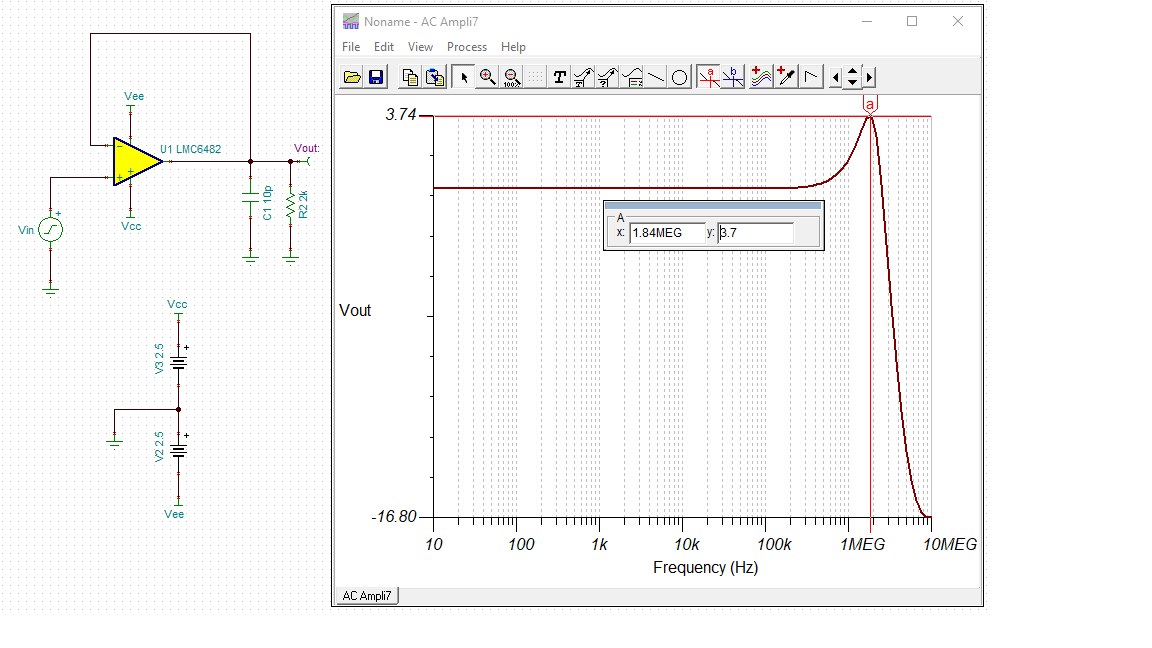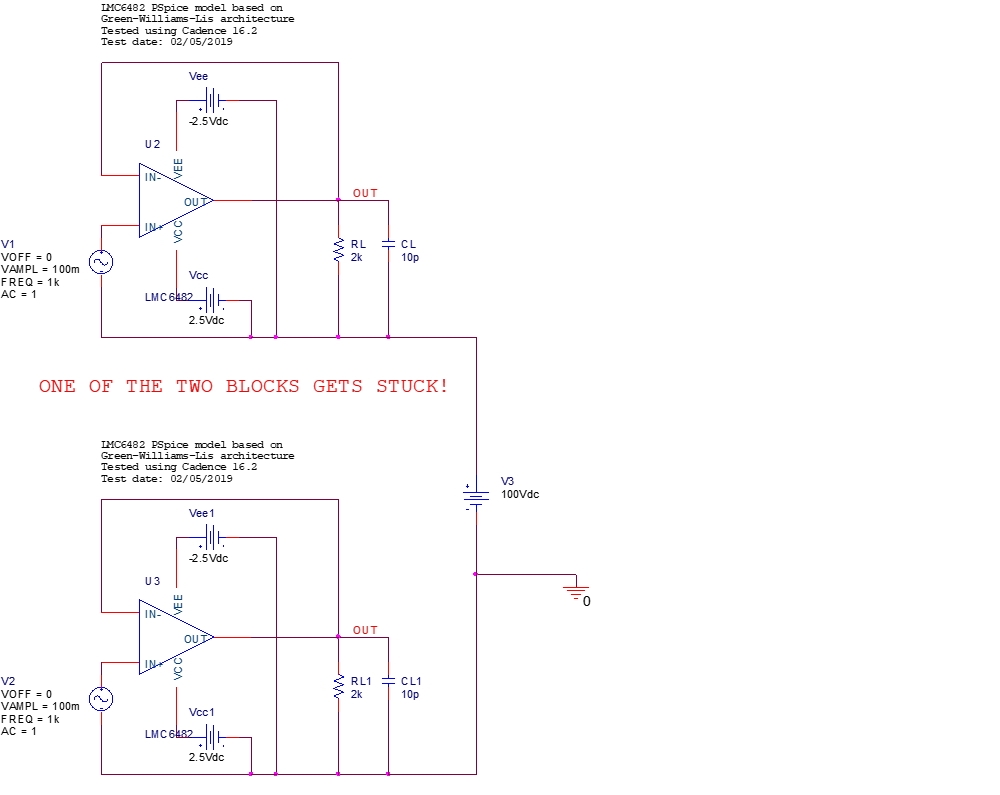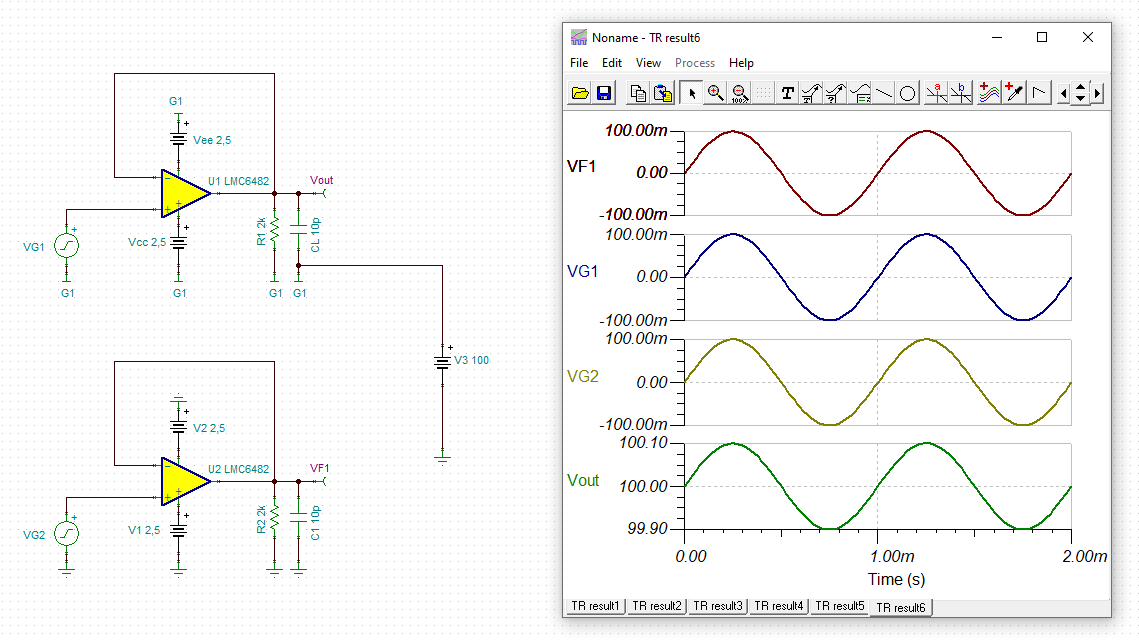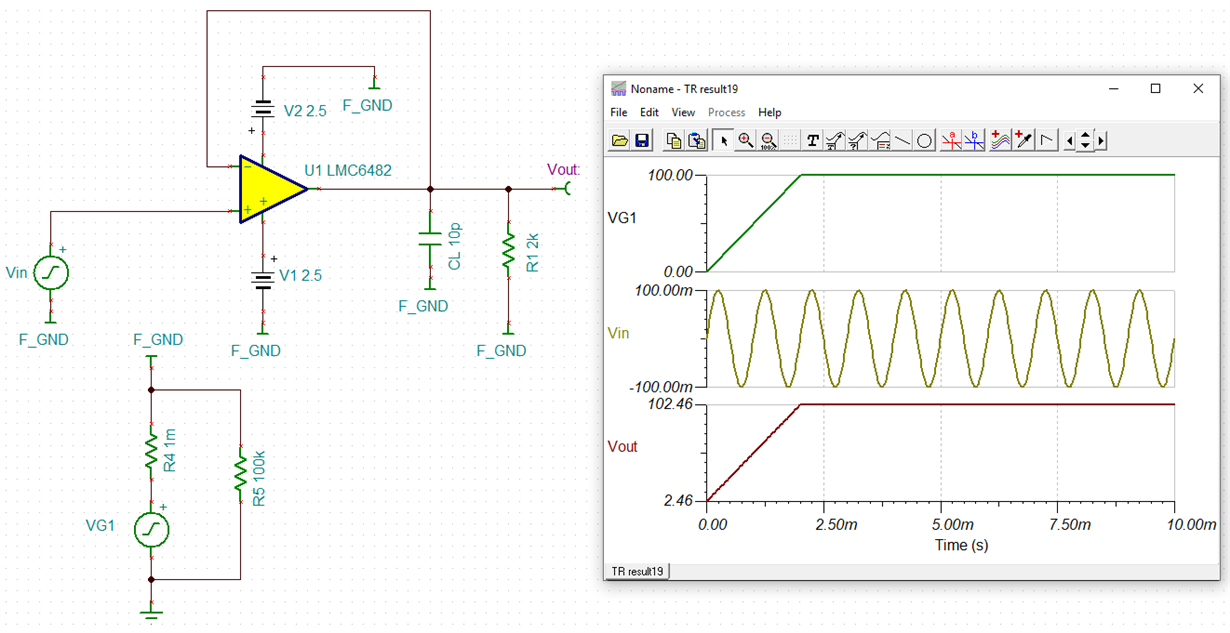Other Parts Discussed in Thread: LM358, TINA-TI
Hello,
I would like to simulate the LMC6482 TI Pspice model in a complex schematic with various grounds; however, unlike several other OpAmp models I tried, looks like this model suffer (erratic output behaviour and/or stuck simulation) when "hung" on a ground reference far from the spice 0 ground (see picture).
Is there a fix other than placing the 0 ground directly as the OP Amp reference?
Thanks


